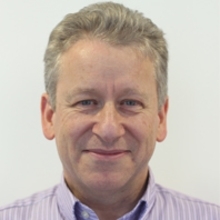From the President
Issue: The Mobile Microbe
08 November 2016 article

This month, a number of events, including the launch of the Early Career Microbiologists' Forum and the Sir Howard Dalton Young Microbiologist of the Year Competition at Charles Darwin House, have reminded us of the emerging talent within the microbiological field.
Congratulations to Lindsay Broadbent from Queen’s University Belfast, who takes away this year’s Young Microbiologist’s coveted prize – and heartfelt congratulations to all of the finalists, shortlisted from an initial field of 600 poster presenters, to represent their Divisions at the competition. These presentations made our recent Annual General Meeting (AGM) highly engaging as we reflected on the previous year’s activities and successes. Thanks also to Sir John Skehel and Evelyn Doyle and attending honorary members who spoke to guests about their personal experiences in developing a career in the microbiological world.
I’ve recently had the pleasure of seeing the Society's work and influence from a number of angles. I attended one of the Irish Division Focused Meetings, partnered with the Irish Society for Immunology, Exploring the Microbe–Immune System Interface, that took place in Cork, and also the joint Focused Meeting with the British Mycological Society in Exeter, The Dynamic Fungus, which both attracted excellent audiences. These meetings exemplify our commitment to collaborate with complementary societies to explore interdisciplinary research themes. Our Focused Meetings enable and empower members to propose and organise meetings outside of our main Annual Conference as a research vignette (often in partnership with others). Focused Meetings can be proposed and put into place quickly, so that emerging topics and more specialised symposia can be explored and discussed. The two meetings that I attended had strong representation from early career microbiologists describing 'at the coalface research' as offered papers and as high-quality posters. These were also illuminated and expanded on by leading experts in their respective disciplines, giving a truly international perspective. Having an appropriate blend of invited and offered talks at our meetings anticipates the Society's increasing commitment to ensure that our community has the opportunity to attend the meetings and participate actively by presenting their work.
We are also analysing carefully the results of our membership questionnaire. The analysis is ongoing but it emerges that our members place a very high value on the raft of networking opportunities that the Society offers. We intended therefore to ensure that networking is further enhanced in the way we organise future events. The impact of the survey will be integrated into the challenges that Council will undertake to enable us to become the type of member organisation that you want and deserve.
This November issue of Microbiology Today is in collaboration with another of our international partners – the Australian Society for Microbiology’s publication, Microbiology Australia, and is a bit of a bumper issue. Again we have set out an issue that has many articles of general interest as well as specific reviews on a theme that will appeal to virologists, bacteriologists and eukaryotic microbiologists.
You will see that we have begun a major policy review of the topic of the microbiome. The Society's policy work has massively increased our impact on government and the general public. Through this work we also harness the extraordinary range of bespoke expertise within our membership. The final outputs from this microbiome policy study will be published in the coming year, but again this underlines the vision of the Society, defined by our officers, staff and members, to put the membership to work and to ensure that microbiology is a participants’ sport and not just one for spectators.
NEIL GOW
President
[email protected]
